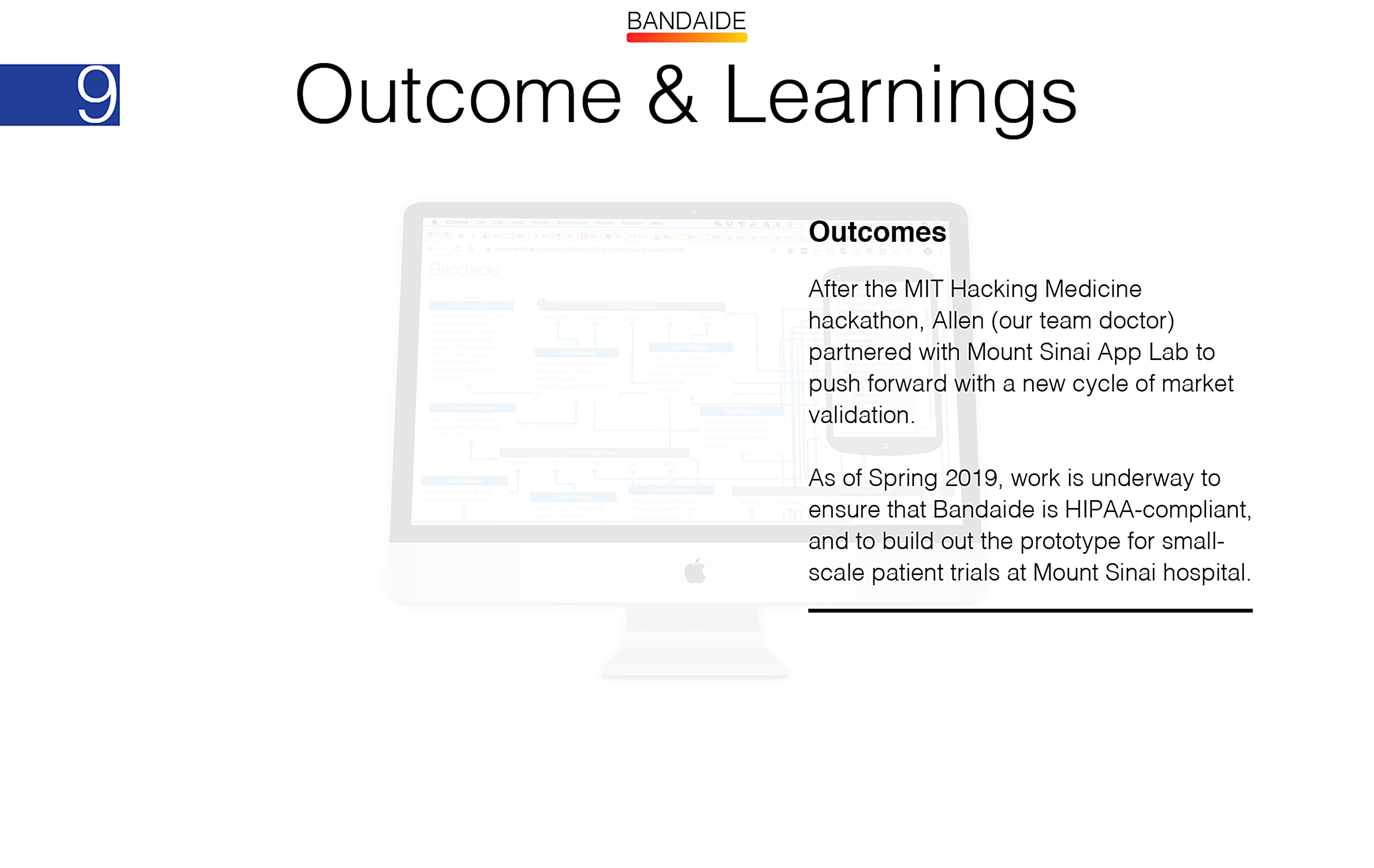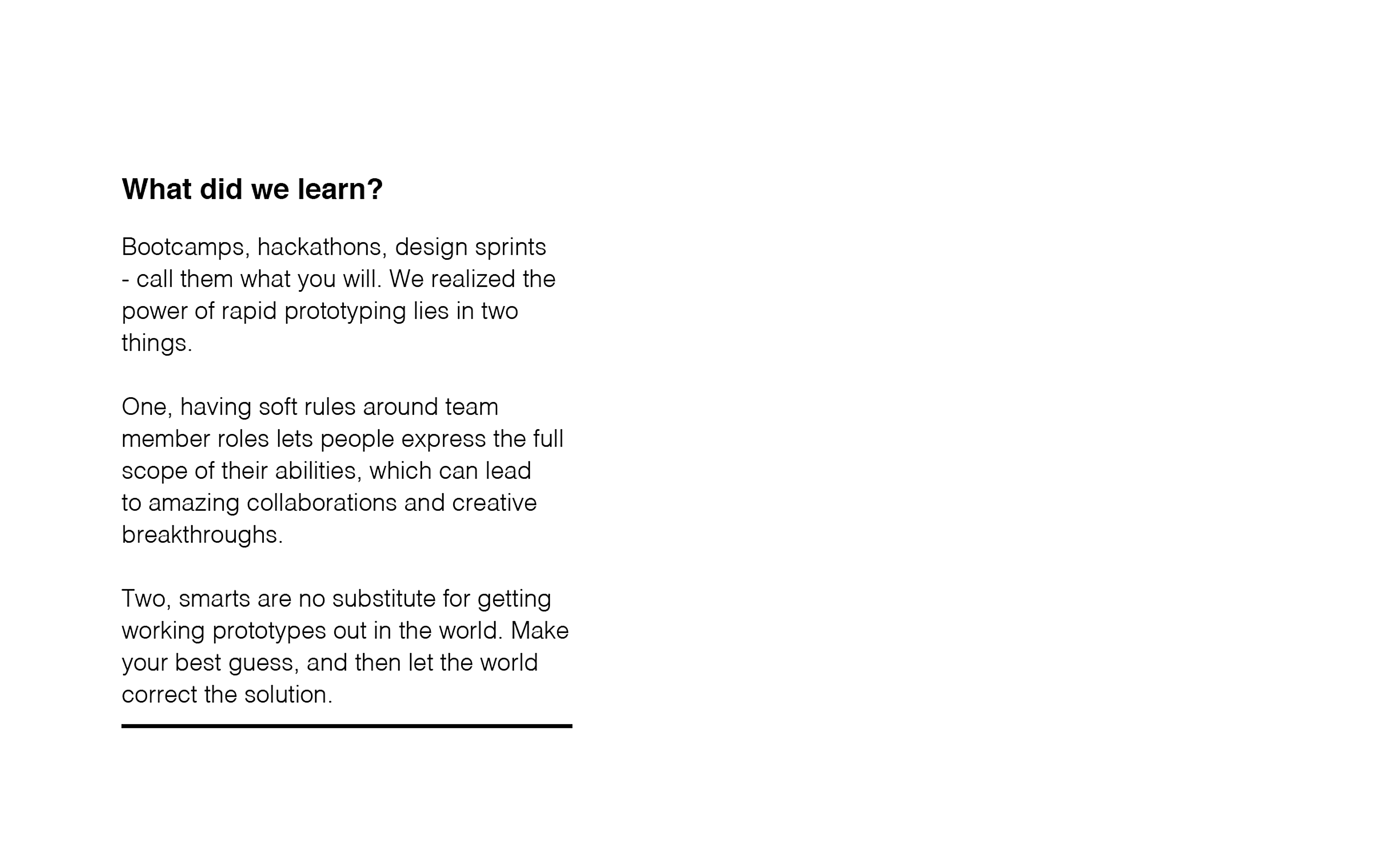

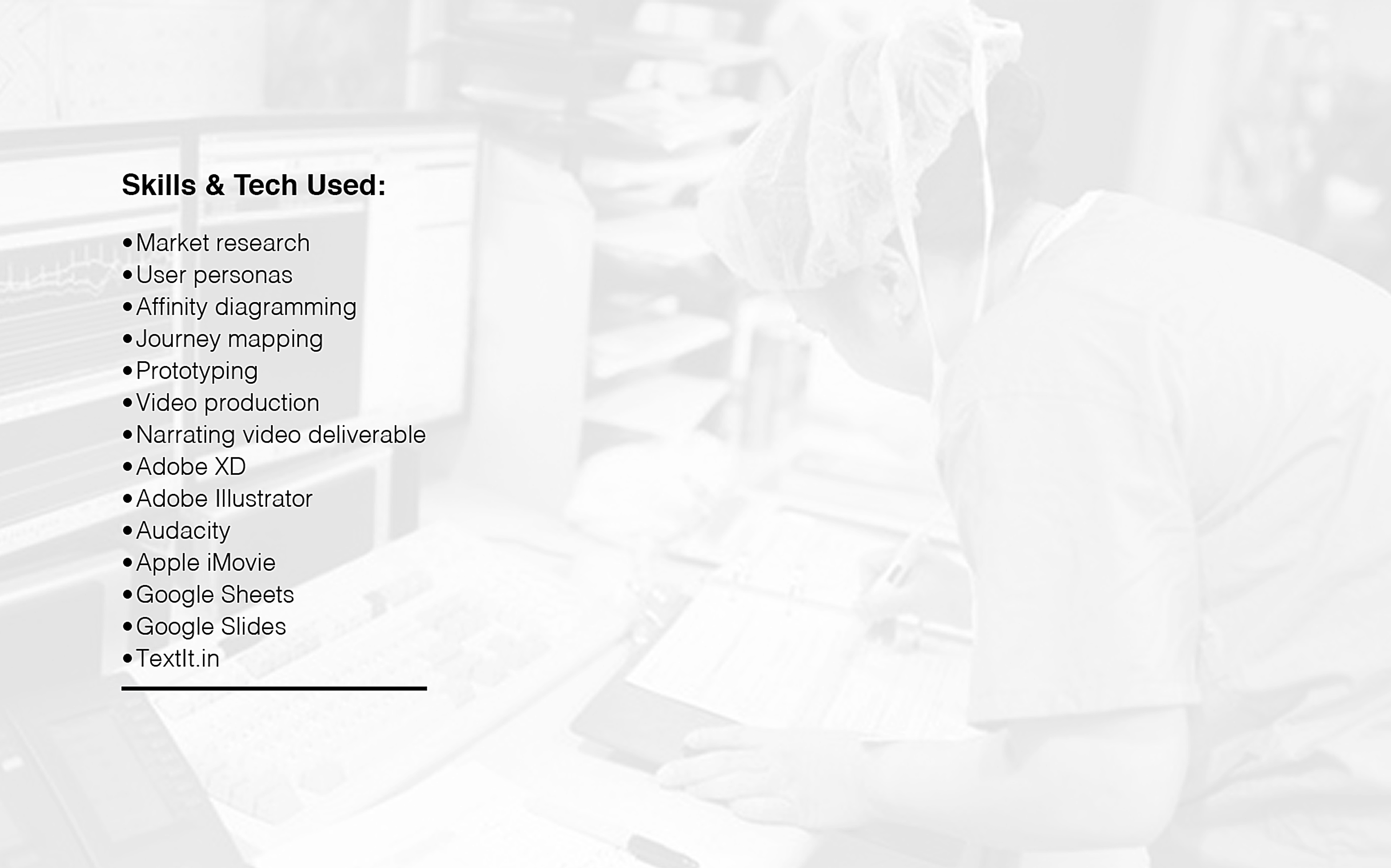
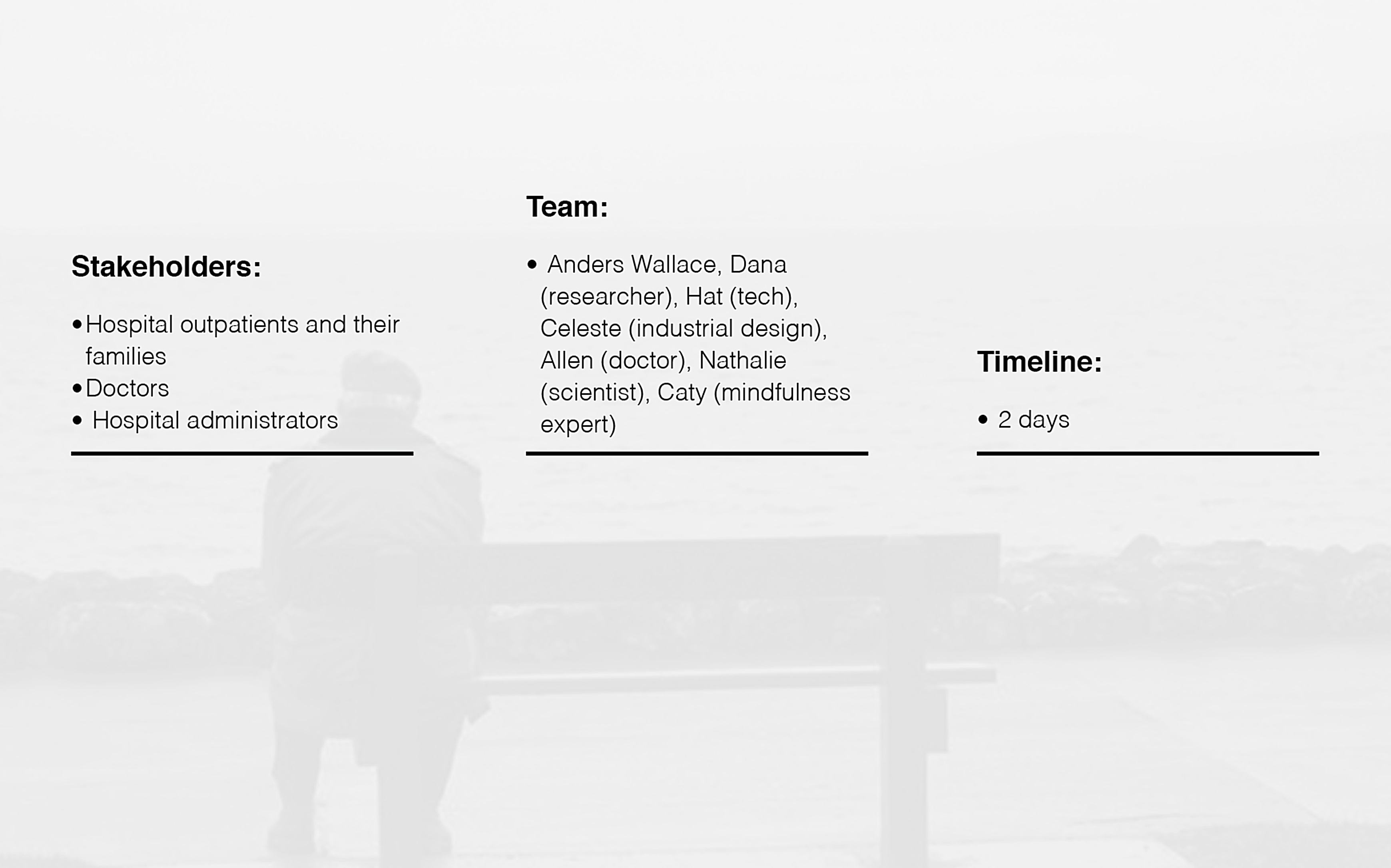
Let’s talk numbers. There were 191 million opioids prescribed in the U.S. in 2017. This causes an estimated $504 billion in economic costs, $41.8 billion in lost productivity, $7.7 billion in criminal justice costs, and over $6 billion in additional child and family assistance spending.
The social, economic, and personal costs of over-prescribing opioids to treat pain are exacerbated by doctors who don’t have enough time to educate patients or discuss non-addictive alternative therapies.
Because poorly controlled pain leads to addiction and other physical side-effects, the U.S. government now requires doctors to provide tailored education to patients on risks and alternatives to opioid use.
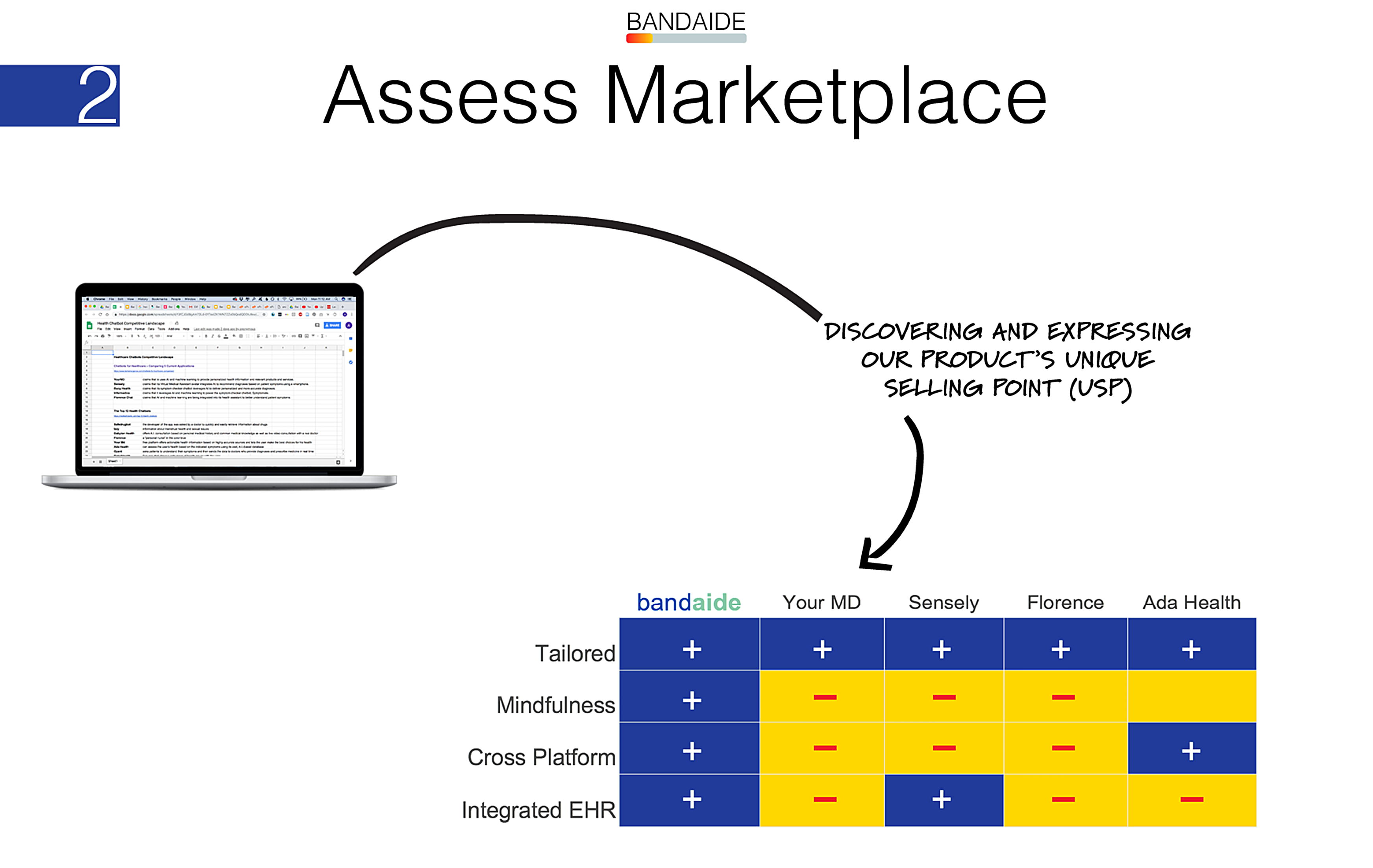
Together with a cross-functional team of doctors, techies, industrial designers, and behavioral therapists at a hackathon hosted by MIT Hacking Medicine, we sought to answer the question: How might we encourage healthy pain management in ways that cut down on the epidemic abuse of over-prescribing dangerous opioids?
To define the market opportunity and business plan for Bandaide, we performed research on the competition.
We researched the competitive landscape of healthcare chatbots. We catalogued their offerings, core functionality, affordances, as well as their competitive advantages and liabilities.
Applications like Your MD, Sensely, Florence, and Ada Health allow for customizable therapy plans. None of these services is accessible across platforms or integrated into existing electronic health record systems; and none of them fosters non-addictive therapies - from mindfulness to visualization, movement therapy, and sound therapy - that are proven to help lower pain and to be non-addictive.
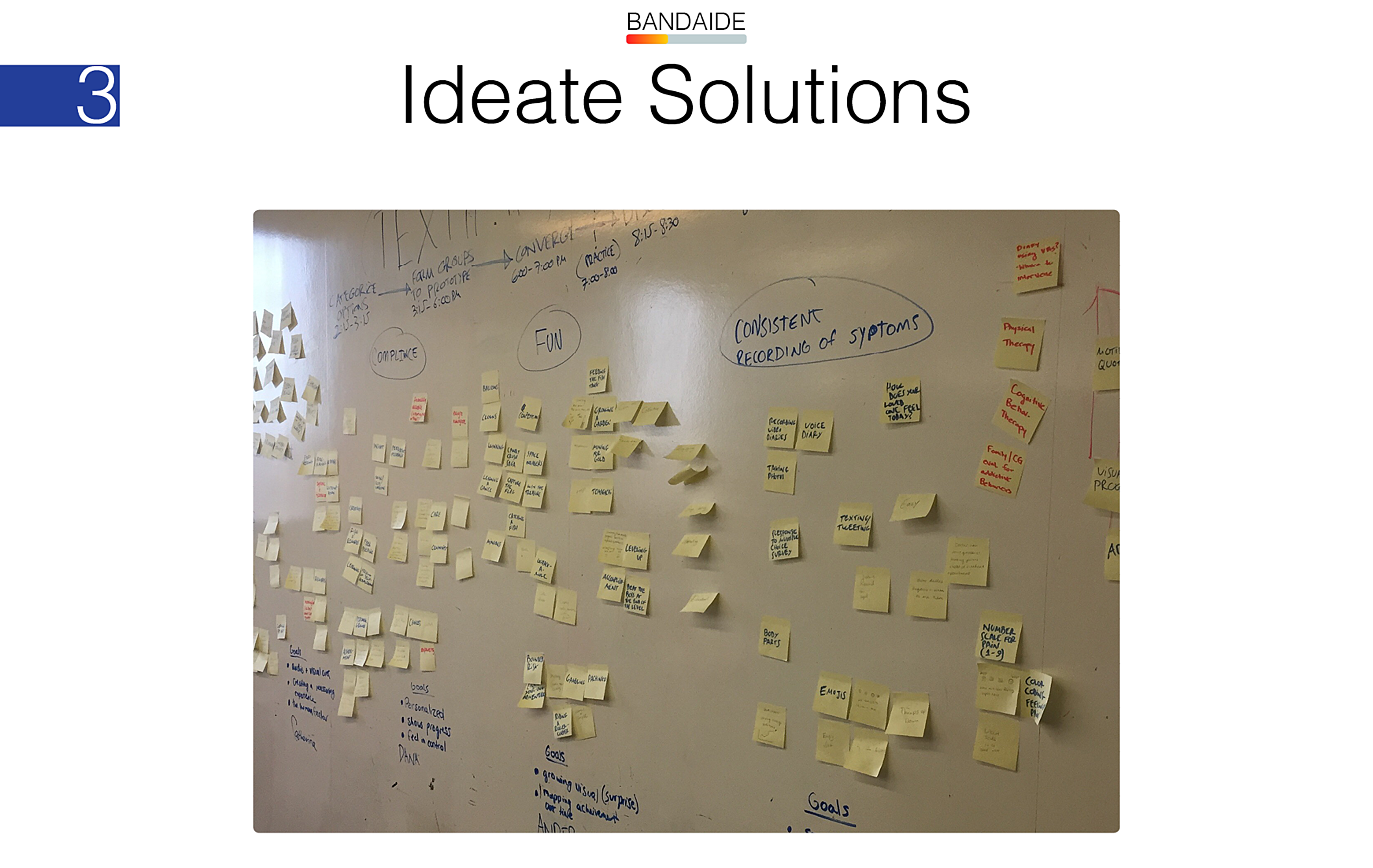
First, we created affinity diagrams to break down the underlying mechanics of pain, mindfulness, and accessible self-care for a broad spectrum of potential users (like Francis) from a place of empathy.
We clustered these themes into topic areas. Then, we turned them into a story of self-actualization that can be achieved through a mindful user experience.
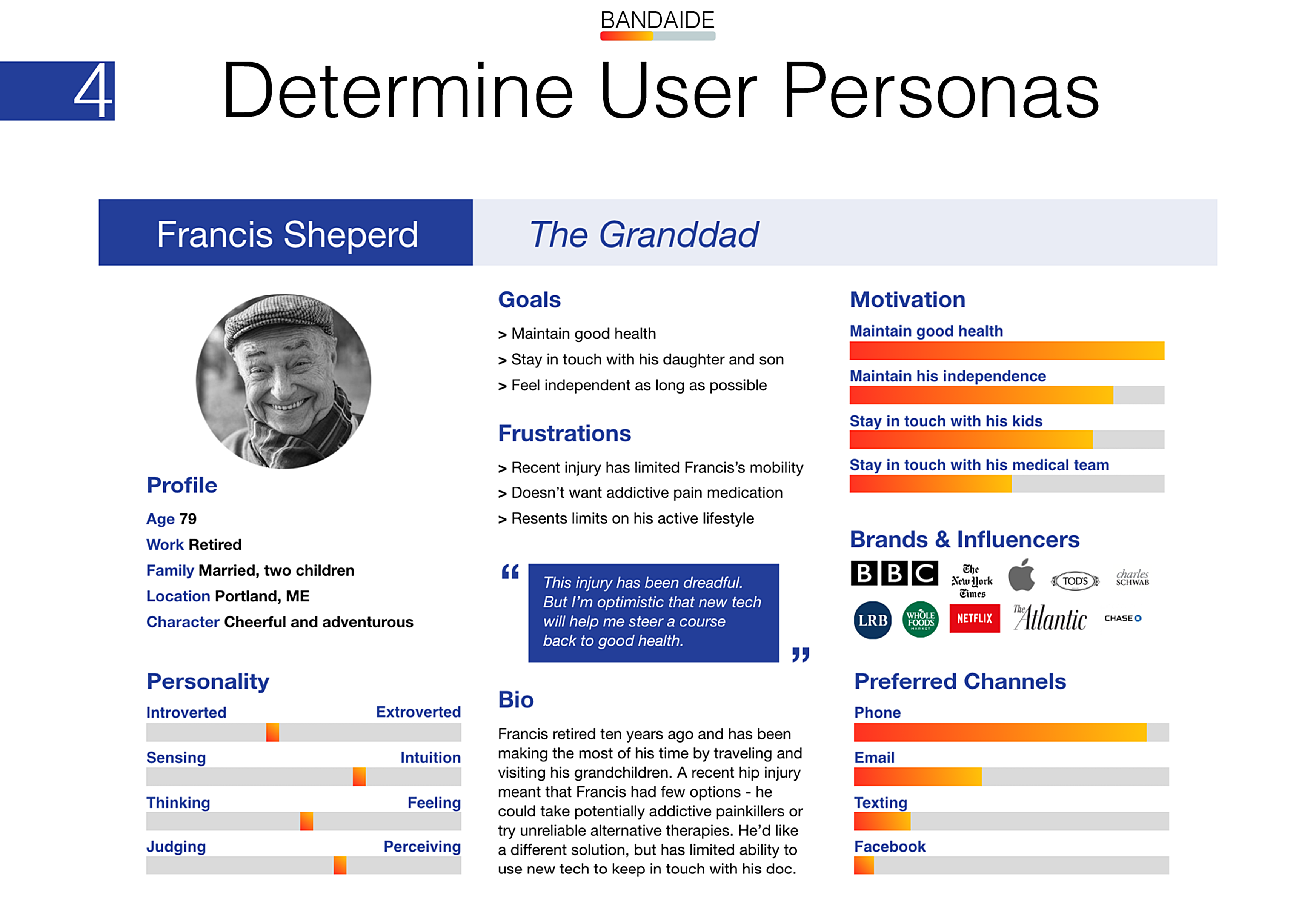
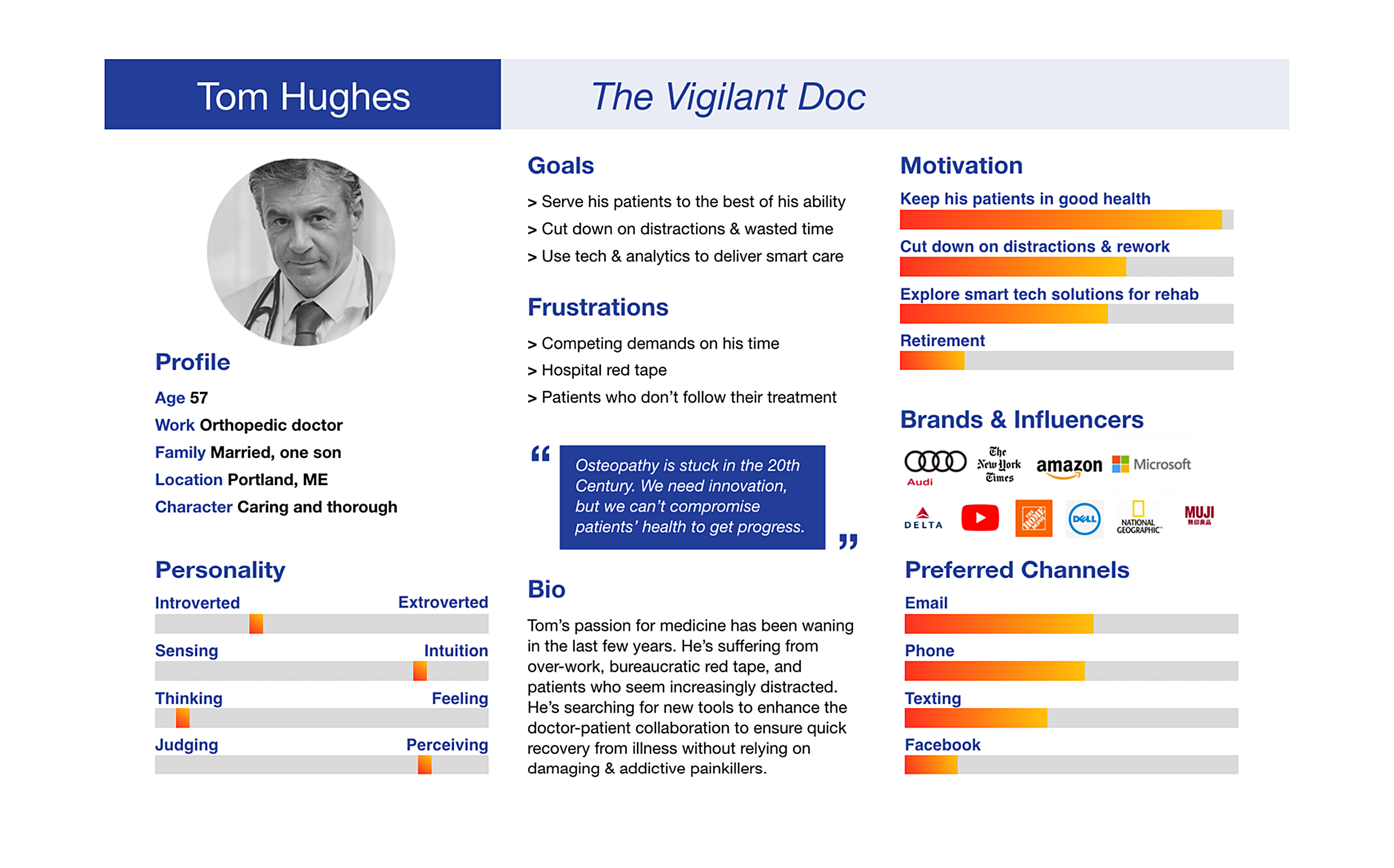
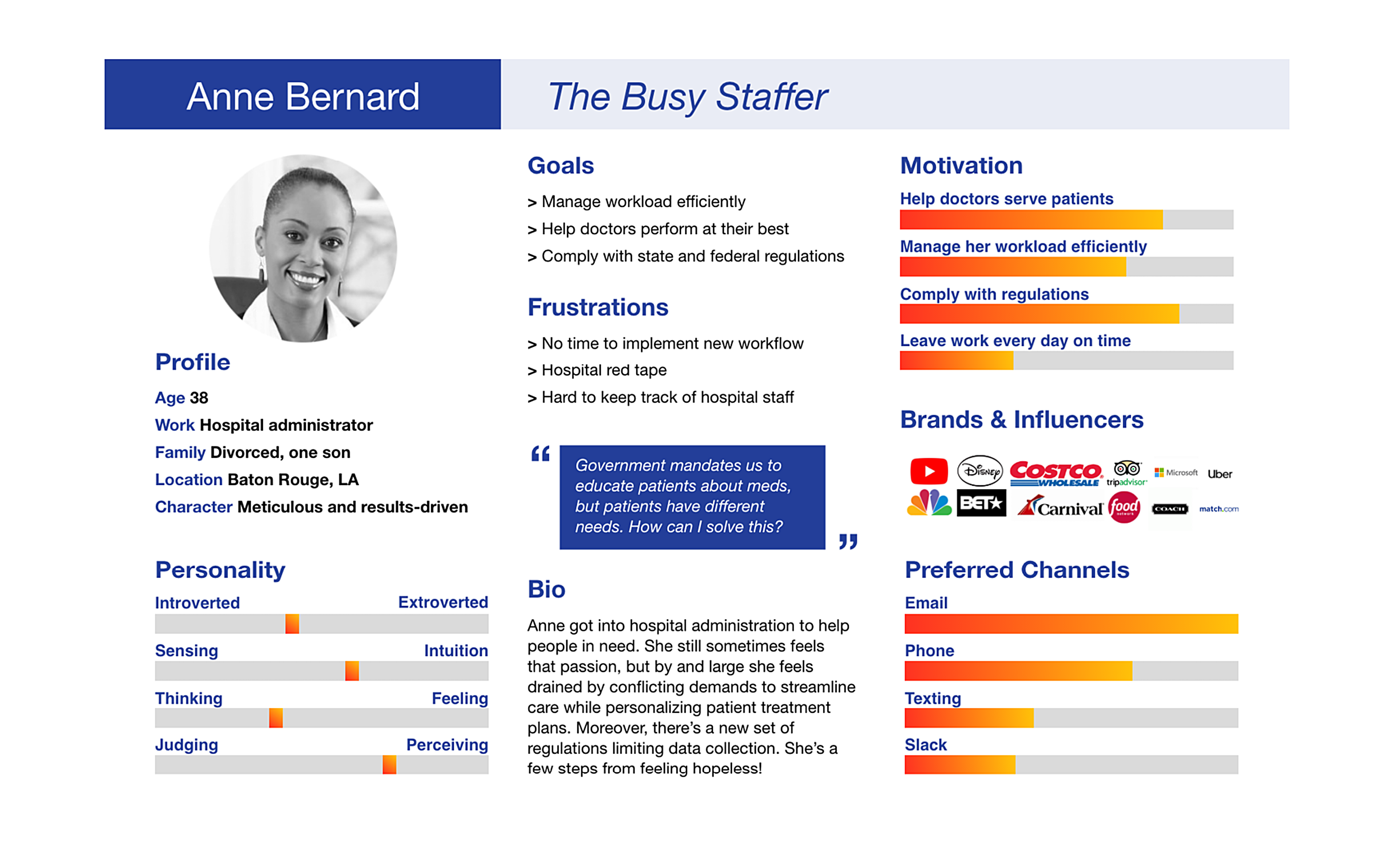
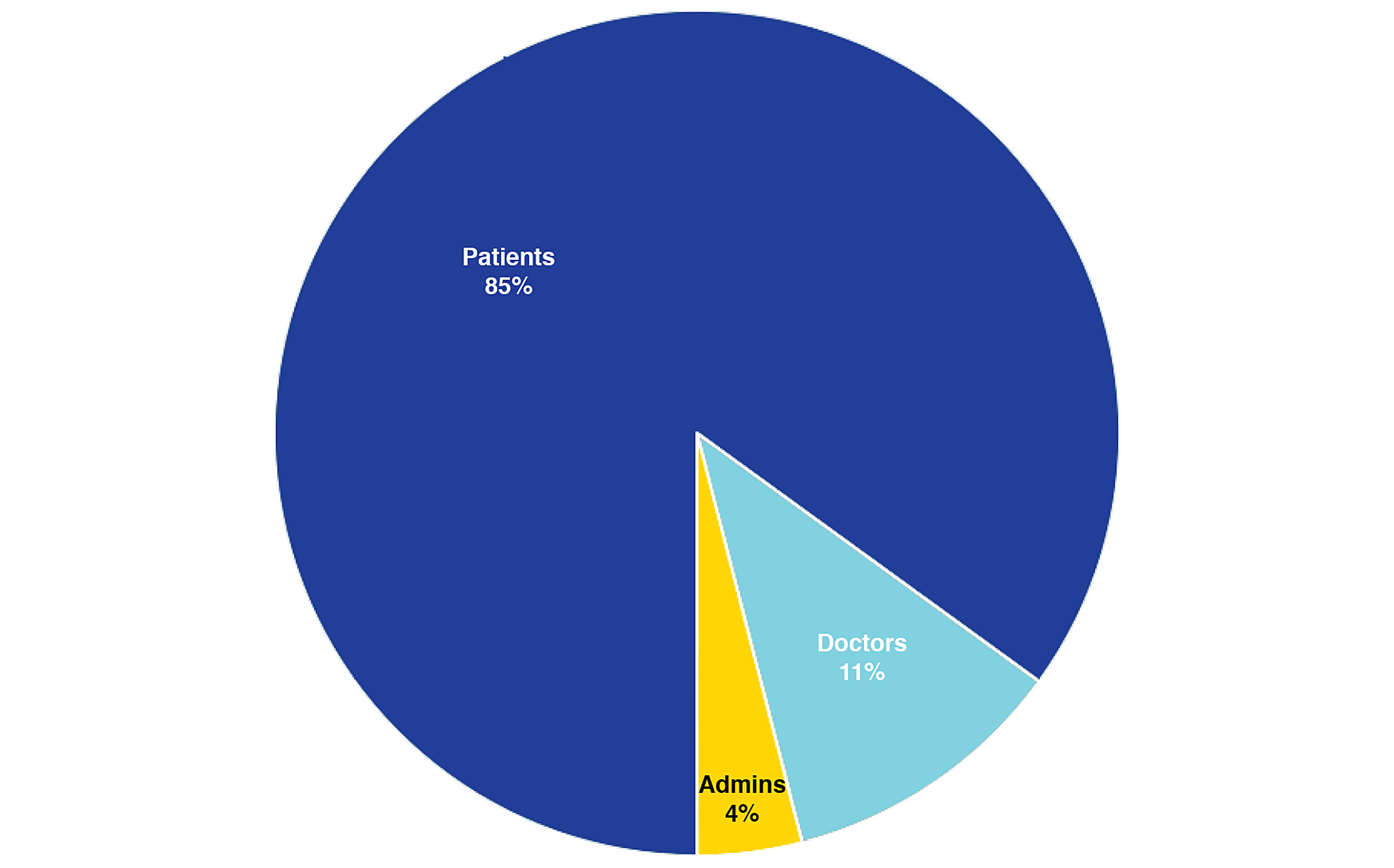
Our user personas helped us understand that our solution needs to be customizable, safe, low cost, scalable, accessible for older adults, and capable of providing better measurable health outcomes.
It needs to be able to educate patients about alternative pain therapies. It also needs to be accessible to older patients, like Francis, who aren't always smartphone-savvy.
It needs to be responsive and customizable to patients' individual needs, to alleviate some of the pressure on doctors like Tom.
It also needs to be scalable and capable of integrating into hospitals' electronic health records databases, to make things easier on administrators like Anne.

We hit on the idea of Bandaide, a text message-based chatbot.
Bandaide integrates with health records and gives patients reminders, support, access to a broad library of alternative pain therapies (including sound therapies, visualization exercises, and movement exercises). It also links patients to third-party services that can make their pain management easier. Bandaide is fully customizable to each patient’s symptoms and treatment plan.

To build a working prototype of Bandaide, we modeled fully interactive user pathways using the online chatbot prototyping software textit.in.
This chatbot is able to interpret not just semantic and numerical feedback, such as words and numbers, but also emoticons.
By functioning as a chatbot rather than an app, Bandaide remains accessible to as many users (from tech savvy to not) as possible.

To keep users engaged, Bandaide uses basic gamification to provide patients with a sense of accomplishment and personal growth. It does this by visualizing the user’s positive feedback to the text prompts as a flowering tree, which turns into a garden over time.
The tree creates a simple but powerful conceptual model of good health whose growth is aligned with users’ own rehabilitation goals. Patients can also choose to share their garden with friends or loved ones, to keep them up-to-date on their progress, in ways that encourage patients to commit and follow through on their treatment plan.
Finally, Bandaide sends the visualization as a GIF that is not stored locally on users’ phones, meaning it is accessible to a broader spectrum of users.


The Bandaide team used rapid prototyping to build and present a working deliverable within 36 hours.
We presented Bandaide to a panel of doctors, service designers, medical students, and entrepreneurs at the cutting edge of healthcare innovation in New York.
Below, notice the two short demo's we presented to our panelists. I wrote and performed the voice-over narration, and Nathalie (our multi-talented medical scientist) produced the video.
